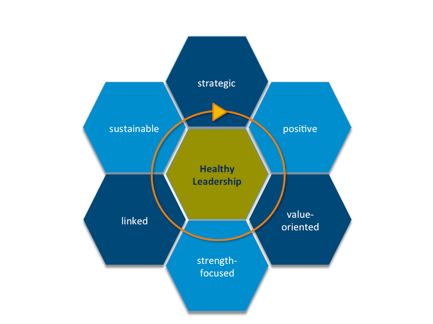Positive Leadership in the Healthy Organisation (3/7)
In this third article of the series “Leadership in the Healthy Organisation“ we look into what we understand as positive leadership, which experiences and scientific background speak for this type of leadership and how positive leadership can be lived.

The relations with other people in professional life have become more diverse and dynamic than ever before due to internationalisation, digitalisation, slackening of hierarchies and matrix organisations. We are in constant exchange not only with colleagues, employees, executives and internal customers, but also with external customers, suppliers, authorities, corporate partners and service providers. Within a Healthy Organisation these relations should be positively formed. Positive in the sense of fair, respectful, considerate of one’s own interests as well as those of others - in the end for the good of society. Idealistic? Sure, but in the long run definitely meaningful - and this is our firm belief! In numerous experiments of behavioural economics, such a cooperation model has proven successful (tit for tat strategy). The world sometimes looks different. Examples can be found daily in the news up to top levels, such as currently the power struggle at VW. The challenge then is to stick with one’s own values, principles and beliefs, even if others play unfair. This does not imply taking part in everything or enduring everything. On the contrary: demonstrating clear expectations, pointing our consequences and implementing them. Value-oriented acting becomes the basic orientation and performance criterion that is rewarded accordingly. This necessitates authentic, respectful and credible social interactions. Social, communicative and empathic skills are in demand here. Leadership action within so called Positive Organisational Behaviour (Avey et al. 2011) as a result of Positive Leadership (Cameron 2012, Tugade et al. 2014) also Transformational and Transactional Leadership (Bruch & Fischer 2014) demonstrate the advantages with sustainable profits. In summary, the following behaviour patterns have proven favourable and effective (as always with these “formulas“ the following is true: situative, role-based and personal aspects sometimes demand a different preparation and an individual dosis):
- - Reflect on your basic attitude towards others. Are you confronting others on an equal footing (“I am okay, your are okay.“) or do you secretly make them smaller (“I am okay, you are not okay.“)? Or do you make yourself smaller (“You are okay, I am not okay“)?
- - Treat others authentically, respectfully and attentively independent of their status, origin or level of education.
- - Make your expectations crystal clear to others.
- - Always meet others trustfully and with cooperativeness. Act consequently if your counterpart does not cooperate. Give your counterpart a second chance when they play fair again.
- - Act on the basis of your values and beliefs. Remain true to them even in difficult situations.

